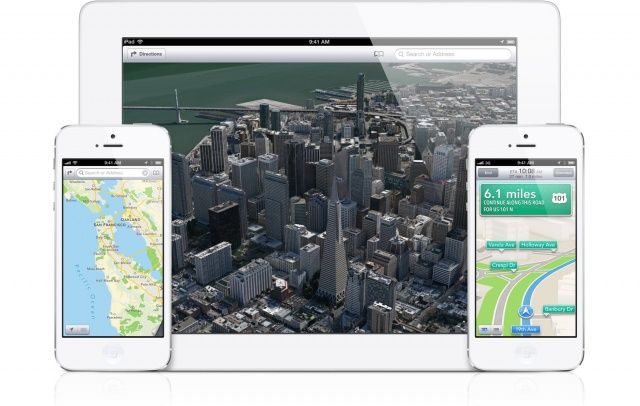Now that Apple has apologized for its decision to release a half-baked Maps app in iOS 6, the vast majority of us will carry on with our lives and use a third-party solution until Apple’s is fixed. Right now, it seems Apple is a company that can achieve anything. So it won’t be too long before Maps is as good as — if not better then — Google Maps. Right?
Maybe not. You see, Apple’s Maps problem could be much bigger than we think, and it could be a long time before we can say goodbye to third-party alternatives.
Tim Cook promised in his open letter to iOS 6 users that “the more our customers use our Maps the better it will get and we greatly appreciate all of the feedback we have received.” However, David Talbot of Technology Review suggests that the “true scale” of Apple’s Maps problem may be significantly greater than the Cupertino company realizes. It cannot just rely on customer feedback alone.
The scale of the problem—particularly, the millions of errant labels on points of interest like businesses—requires new data sources and easier ways to contribute fixes, as well as enough willing map-fixers in geographically dispersed regions. Little of this is evident now, experts say.
Right now, iOS 6 users can report Maps problems from within the Maps app. But who actually does that? When you search for a road that doesn’t exist in Maps, do you tell Apple about it, or do you just close Maps and open up a third-party app? I’ll bet the vast majority of you do the latter.
With that said, Apple can’t rely on users alone to report problems. It needs other solutions.
According to Michael Dobson, president of TeleMapics, one of those could be analyzing users’ search results. For example, when a user searches for a place that isn’t found, Apple can flag this as a possible error in its database, then establish why there was no result.
Another solution would be to provide a better interface for users to report problem. Google utilizes a Map Maker service, a browser-based tool that allows anyone to report problems and edit maps that are incorrect, to help perfect its maps.
The other advantage Google has is that it utilizes 5,000 to 7,000 employees to iron out mapping problems. In comparison, Dobson doesn’t believe that Apple has more than a couple of hundred people working on its own service at this point. That’s a massive difference, and it explains why Google’s maps are so much more accurate than Apple’s are right now.
Google also has a flock of cars that have so far been used to log five million miles worldwide, recording things like GPS traces of streets, images of buildings, names and addresses of businesses, and more.
Dobson also notes that some of Apple’s problems are easier to fix than others. For example, buildings and highways that appear to be melting, and clouds obstructing the view of your house are “the least of it.”
The most serious problem—and no doubt an ongoing one—has to do with the points of interest. Beyond businesses, these include labels on places including schools, hospitals, parks, and police and fire stations.
Reports of missing or misplaced labels on Apple Maps have cropped up around the world. And this is particularly problematic, because people often want to search for a point of interest by name, not address. If the point is on the wrong spot, then the directions—and the maps themselves—become useless.
Dobson suggests Apple needs its own Map Maker tool. He notes the company’s strength is in making things simple, and so it should create a “super-simple” editing interface that would allow users to modify and correct local maps.
While Apple does allow us to report some problems already, then, its feedback options at this point are incredibly basic, allowing you to give vague answers like “Information is incorrect,” “Pin is at incorrect location,” “Place does not exist,” and “My problem isn’t listed.”
Talbot’s report is a bit of an eye-opener, especially if you weren’t already aware of the work that Google puts into making sure its own maps are spot-on. In fact, it makes me even more surprised that Apple has already made its own Maps service public.
Google Maps was terrific on iOS. Sure, it didn’t have turn-by-turn navigation, but at least it worked, and it was almost always accurate. Apple still had time left on its contract, so why did it pull Google Maps so quickly when it was aware there’s so much work still to be done on its own service?
I still can’t think of a sensible answer to that question. Can you?
Source: Technology Review
Via: AppAdvice


